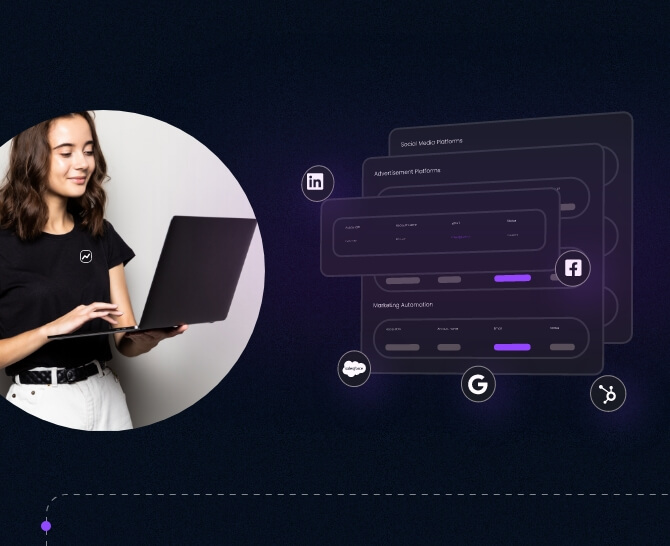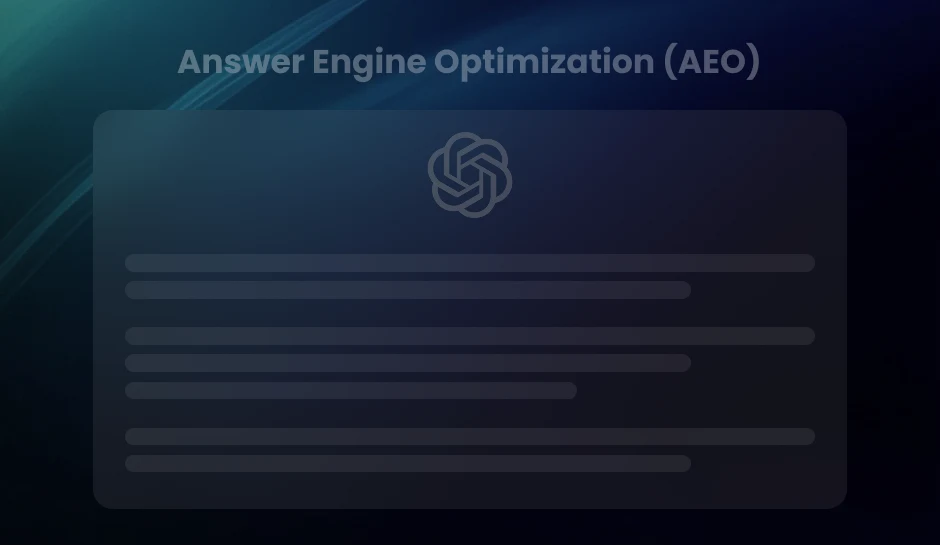
Revenue Analytics: Unlock Financial Insights
Revenue analytics helps businesses gain real-time insights into their financial performance & identify growth opportunities. In this blog post, we have covered all that you need to know to get started with revenue analytics.
In the traditional business approach, organizations sought revenue intelligence from the sales spectrum. However, in today’s data-driven world, most companies realize it encompasses more than sales data.
The traditional approach to measuring revenue had a major drawback – sales data isn’t the best way to quantify or forecast revenue. In a dynamic business environment, the market constantly changes with the emergence of new technologies and fast-changing customer aspirations.
As companies like yours need to make informed decisions daily, you must rely on a tool that offers you tactical and predictive information. Revenue analytics provides valuable insights into the company’s financial performance and lets you identify growth opportunities.
Here, we shall uncover the secrets of revenue analytics and look at how it can benefit your business. We shall also discuss how it can help you identify growth opportunities for the future.
What is Revenue Analytics?
Revenue analytics is the process of using data to understand a company’s revenue performance. It is a broad term encompassing the analysis of different revenue-related metrics to gain in-depth knowledge of a company’s financial performance. With revenue analytics, your business can understand you are generating revenue, where it is coming from, and how you can optimize revenue streams.
Revenue analytics includes several data points that offer insights into your business’ performance and growth trajectory. Let us look at some of the most important elements of revenue analytics and why they matter to your business.
- Sales Trends Analysis
- Customer Segmentation Analysis
- Pricing Analysis
- Product Mix Analysis
Though not the only data, it is the most important data to measure any business’s success or missed opportunities. Sales trend analysis involves analyzing sales data to understand how revenue changes over time. It helps your team identify seasonal trends, changes in customer behavior, and other factors that can impact revenue.
Customers are at the heart of any business. In customer segmentation analysis, you divide customers into different groups based on their behavior and demographics. With this approach, you can understand which customer segments are the most profitable and how to tailor marketing efforts to target those segments.
Pricing has become a make-or-break factor in the competitive digitally-driven market. In pricing analysis, your team has to study the impact of different pricing strategies on revenue. When you have insights into the impact of pricing, you can develop a pricing strategy that maximizes revenue and gives you an edge over competitors.
Not all your products sell equally, nor should you distribute marketing and promotional efforts equally. Product mix involves analyzing the mix of products you sell to understand their impact on your revenue stream. You can identify the most popular products from your stable, double up on their promotion, and identify products you can discontinue to save precious sales and marketing resources.
Benefits of Revenue Analytics
Revenue Analytics, when done just the right way, brings several benefits to the table. Here are some of them:
- By analyzing sales data and identifying trends and patterns, revenue analytics can help you identify new opportunities for revenue growth.
- It lets you set optimal product or service prices based on customer demand, competitor pricing, and market trends.
- It optimizes sales processes and identifies areas where you can improve efficiency, such as reducing costs or streamlining operations.
- You get real-time insights into financial performance, and lets you make informed decisions about investments, resource allocation, and other strategic initiatives.
- Predict who is likely to churn so that you can reduce the customer churn rate (CCR) by running win-back/reactivation campaigns for this segment.
How To Leverage Revenue Analytics for Growth
We already know what revenue analytics is and the benefits it brings to the table. Now it’s time to turn our attention to how you can use it to identify growth opportunities.
The insights gained from revenue analytics let you identify ways and means to increase revenue or reduce costs. Here are some ways in which you can leverage revenue analytics to foster business growth:
- Identifying New Markets:
- Optimizing Pricing Strategy:
- Improving Customer Retention:
- Streamlining Operations:
You can use revenue analytics to identify new geographic regions with high demand for your products and services. You can increase revenue and expand your customer base by targeting these regions. The same isn’t possible with the traditional approach of looking at revenue from sales figures which is a backward approach to looking at data.
We discussed the importance of a pricing strategy earlier. Revenue analytics lets you identify the optimal pricing strategy. By adjusting the pricing strategy, you can increase revenue without sacrificing profitability.
By analyzing customer data, you can identify which customers are at risk of churning and take steps to improve customer retention. You can offer personalized discounts or improve the customer experience to retain these customers.
Revenue analytics offers insights into areas where you can reduce costs or improve efficiency. The possibilities are endless, from streamlining the supply chain to reducing inventory costs and improving the production process.
Best Practices for Implementing Revenue Analytics
Implementing revenue analytics isn’t easy and requires a strategic approach. Here are some of the best practices for implementing revenue analytics:
- Define Your Goals
- Choose the Right Tools
- Create A Data-Driven Culture
- Monitor And Adjust the Strategy
Start by defining your goals with revenue analytics. It involves setting the metrics that you will use to track the success. It will help you focus on the most important areas and collect the right data.
Many tools are available for revenue analytics, so choosing the one that best fits your business needs is important. Look for a tool to integrate your existing systems and provide actionable insights.
To get the most out of revenue analytics, creating a data-driven culture in the organization for decision-making is important. Educate employees on the benefits of revenue analytics and provide them with the tools they need to make data-driven decisions.
Revenue analytics is an ongoing process; monitoring and adjusting your strategy is important. Ensure that you are maximizing revenue and identifying new growth opportunities.
Understanding Revenue
Revenue is the total amount of money generated from the sales of products or services by a business. It is a crucial element in determining the financial health and success of a company. Understanding revenue is essential for making informed strategic decisions and driving business growth.
Definition and components of revenue
Revenue can be divided into two main components: gross revenue and net revenue. Gross revenue is the total income generated, including all sales, discounts, and returns. Net revenue, on the other hand, is the revenue that remains after deducting the cost of goods sold and any other expenses directly associated with generating those sales.
Importance of revenue in business performance analysis
Revenue plays a significant role in analyzing a business’s overall performance. It serves as a barometer of success, indicating the effectiveness of sales strategies, marketing campaigns, and overall customer demand. By monitoring revenue trends and patterns, businesses can identify areas of strength and weakness, measure the impact of various initiatives, and adjust their strategies accordingly.
Key metrics for measuring revenue performance
Measuring revenue performance involves tracking several essential metrics, including:
- Revenue growth rate
- Revenue per customer
- Revenue by product or service
- Revenue by market segment
Measures the percentage increase in revenue over a specific period
Determines the average amount of revenue generated from each customer
Analyzes the contribution of different offerings to overall revenue
Assesses the revenue generated from various customer segments or target markets
By closely monitoring these metrics, businesses can gain valuable insights into their revenue performance and make data-driven decisions to optimize their overall revenue.
Data Analytics for Revenue Optimization
Data analytics plays a crucial role in revenue analytics. By analyzing data, businesses can gain valuable insights into their revenue streams and identify areas of improvement. It allows organizations to make data-driven decisions that optimize revenue and drive growth.
Importance of data analysis in revenue analytics
Data analysis is essential in revenue analytics as it helps businesses identify trends, patterns, and gaps in their revenue streams. By analyzing historical and real-time data, organizations can understand the factors that impact their revenue and identify areas for improvement. With data analysis, businesses can uncover opportunities for revenue growth and implement strategies to optimize their revenue streams.
Techniques for analyzing revenue data
There are various techniques that organizations can use to analyze revenue data. These techniques include:
- Segmentation analysis:
- Trend analysis:
- Correlation analysis:
By segmenting customers based on various criteria such as demographics, behavior, and purchasing patterns, businesses can gain insights into different revenue streams and tailor their strategies accordingly.
Analyzing revenue trends over time allows businesses to understand the direction of their revenue streams and identify potential growth opportunities.
By examining the relationship between different variables, organizations can identify factors that have a significant impact on revenue and focus their efforts on optimizing those areas.
Customer Segmentation for Revenue Growth
Customer segmentation is a crucial factor in driving revenue growth for businesses. By dividing your customer base into distinct groups, you can tailor your marketing and sales strategies to better meet their specific needs and preferences. This personalized approach not only enhances customer satisfaction but also boosts conversions and ultimately increases revenue.
Effective strategies for customer segmentation and targeting:
- Demographic Segmentation
- Psychographic Segmentation
- Behavioral Segmentation
- Geographic Segmentation
Dividing customers based on age, gender, income, education, and other relevant demographic factors can help you understand their unique needs and preferences.
This strategy involves categorizing customers based on their personality traits, interests, lifestyles, and values. By understanding their psychographics, you can create targeted marketing campaigns that resonate with their emotions and motivations.
Analyzing customer behavior such as purchase history, frequency, and loyalty can help identify patterns and segments for effective targeting. This allows you to provide personalized offers and incentives to drive repeat purchases and increase customer lifetime value.
Segmenting customers based on their geographical location can help you tailor your marketing efforts to specific regions or areas. This is particularly useful for businesses with a physical presence in multiple locations.
Sales Analytics for Revenue Enhancement
In order to maximize revenue, businesses need to have a deep understanding of their sales performance and strategies. This is where sales analytics comes into play, providing valuable insights and opportunities for revenue enhancement.
Role of sales analytics in revenue generation
Sales analytics plays a crucial role in driving revenue generation. By analyzing sales data and performance metrics, businesses can identify trends, patterns, and opportunities for improvement. This enables them to make informed decisions and optimize their sales strategies.
Through sales analytics, businesses can track the effectiveness of their sales campaigns, identify customer preferences and behaviors, and make data-driven adjustments to enhance revenue. It helps identify potential bottlenecks in the sales process and provides solutions to eliminate them, ultimately increasing sales and revenue.
Key sales analytics metrics for revenue enhancement
When it comes to revenue enhancement, certain sales analytics metrics are particularly important:
- Sales Conversion Rate
- Sales Velocity
- Customer Lifetime Value (CLV)
- Sales Pipeline
This metric measures the percentage of leads or prospects that convert into paying customers. By analyzing and enhancing conversion rates, businesses can increase revenue without relying solely on acquiring new customers.
This metric assesses the speed at which deals are closed, from initial contact to final sale. By monitoring sales velocity, businesses can identify areas of improvement in their sales process and accelerate revenue generation.
CLV measures the total revenue a customer is expected to generate throughout their engagement with the business. By understanding CLV, businesses can focus their efforts on retaining high-value customers and increasing long-term revenue.
Monitoring the sales pipeline provides insights into the health of a business’s sales efforts and predicts future revenue. By analyzing the pipeline, businesses can identify potential bottlenecks or gaps and take proactive measures to fill them.
Market Research and Consumer Insights
Market research and gathering consumer insights play a crucial role in revenue analytics. By understanding the market trends and consumer behavior, businesses can make informed decisions to optimize their revenue strategies.
Importance of market research in revenue analytics
Market research provides valuable insights into the current market dynamics, consumer preferences, and competitors’ strategies. It helps businesses identify potential opportunities and threats, allowing them to adjust their revenue strategies accordingly.
With market research, businesses can gain a deeper understanding of their target audience, their needs, and purchasing behaviors. This knowledge enables companies to align their products, pricing, and marketing efforts with consumer demands, thereby increasing revenue potential.
Techniques for conducting market research and gathering consumer insights
There are various techniques businesses can employ to conduct market research and gather consumer insights. These include:
- Surveys and questionnaires
- Focus groups
- Data analysis
Conducting surveys and questionnaires allows businesses to directly collect consumer opinions, preferences, and feedback. This information aids in developing targeted revenue strategies.
Organizing focus groups provides an opportunity to have in-depth discussions with consumers, exploring their motivations, needs, and perceptions. This qualitative data enriches revenue analytics by uncovering valuable insights.
Analyzing existing data, such as sales records, customer profiles, and online behavior, can provide invaluable insights into consumer patterns and trends. Utilizing data analysis tools and techniques enhances revenue optimization.
Utilizing market research findings to optimize revenue strategies
Once market research and consumer insights are gathered, businesses can optimize their revenue strategies based on the findings. This may include:
- Product or service enhancements
- Pricing optimization
- Targeted marketing campaigns
Using market research findings, businesses can identify areas for improvement or develop new products and services that better align with consumer preferences, thereby increasing revenue potential.
Market research helps identify price sensitivity, competitor pricing strategies, and consumer willingness to pay. With this information, businesses can optimize their pricing strategies to maximize revenue.
Knowing the target audience’s preferences and motivations allows businesses to develop more targeted and effective marketing campaigns, increasing customer engagement and revenue generation.
Conclusion
Revenue analytics is a powerful tool that helps you improve your bottom line and identify growth opportunities. You can optimize revenue streams by leveraging the insights gained from revenue analytics. From identifying new markets and optimizing pricing strategy to improving customer retention and streamlining operations, it can usher in new opportunities and give your business a competitive advantage.
Do You Want to Leverage Revenue Analytics for Better Growth? Talk to Us!
Defining your goals and choosing the right tools to build a data-driven culture in the organization is important. If you are looking for a tool that automates revenue analytics, DiGGrowth would be a perfect fit. We bring you an AI-driven, no-code marketing analytics platform that empowers decision-making. Aside from revenue intelligence, you also get insights into data integrity, data hygiene, and data governance. To learn more, email us at info@diggrowth.com.
Ready to get started?
Increase your marketing ROI by 30% with custom dashboards & reports that present a clear picture of marketing effectiveness
Start Free Trial
Experience Premium Marketing Analytics At Budget-Friendly Pricing.

Learn how you can accurately measure return on marketing investment.
Additional Resources
Don’t Let AI Break Your Brand: What Every CMO Should Know
AI isn’t just another marketing tool. It’s changing...
Read full post postFrom Demos to Deployment: Why MCP Is the Foundation of Agentic AI
A quiet revolution is unfolding in AI. And...
Read full post postAnswer Engine Optimization (AEO): The New Frontier of SEO in 2025
As digital experiences continue to evolve, so does...
Read full post postFrequently Asked Questions
Revenue analytics is the process of using data to understand a company's revenue performance. It involves analyzing various revenue-related metrics to gain in-depth knowledge of a company's financial performance, such as how revenue is generated, its sources, and how to optimize revenue streams.
Some of the important elements of revenue analytics include:
Sales Trends Analysis: Analyzing sales data to understand how revenue changes over time, identify seasonal trends, and factors influencing revenue.
Customer Segmentation Analysis: Dividing customers into different groups based on behavior and demographics to identify profitable segments and tailor marketing efforts.
Pricing Analysis: Studying the impact of different pricing strategies on revenue to develop optimal pricing strategies.
Product Mix Analysis: Analyzing the mix of products sold to understand their impact on revenue and identify popular products for promotion.
The benefits of revenue analytics include:
Identifying new opportunities for revenue growth through trend analysis and pattern identification.
Setting optimal prices based on customer demand, competitor pricing, and market trends.
Optimizing sales processes and improving efficiency, such as reducing costs or streamlining operations.
Gaining real-time insights into financial performance for informed decision-making.
Predicting customer churn and implementing strategies to reduce churn rate.
Revenue analytics can be leveraged for growth in the following ways:
Identifying New Markets: Use revenue analytics to identify regions with high demand for products or services and target them for revenue expansion.
Optimizing Pricing Strategy: Analyze revenue analytics to identify the optimal pricing strategy for maximizing revenue without sacrificing profitability.
Improving Customer Retention: Analyze customer data to identify at-risk customers and take steps to improve customer retention through personalized discounts or enhanced experiences.
Streamlining Operations: Use revenue analytics to gain insights into areas where costs can be reduced or efficiency can be improved, such as supply chain optimization and inventory cost reduction.
Some best practices for implementing revenue analytics include:
Define Your Goals: Clearly define your goals and metrics for tracking success to focus on the most important areas and collect relevant data.
Choose the Right Tools: Select a revenue analytics tool that aligns with your business needs, integrates with existing systems, and provides actionable insights.
Create a Data-Driven Culture: Foster a data-driven culture within the organization, educate employees about the benefits of revenue analytics, and provide them with the necessary tools for data-driven decision-making.
Monitor and Adjust the Strategy: Revenue analytics is an ongoing process, so regularly monitor and adjust your strategy to maximize revenue and identify new growth opportunities.
 Shahzad Mussawir
Shahzad Mussawir  Rahul Sachdeva
Rahul Sachdeva 

